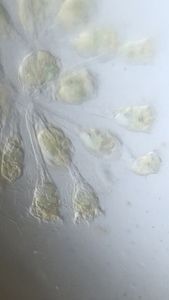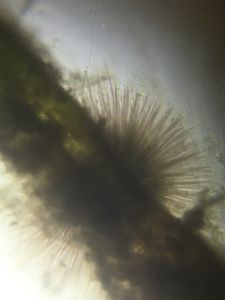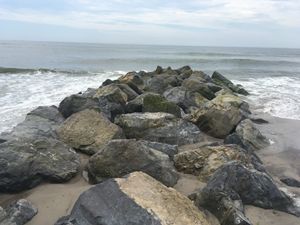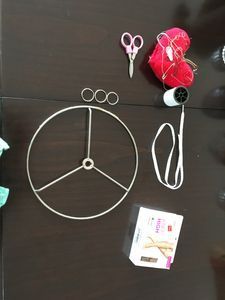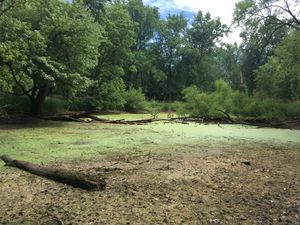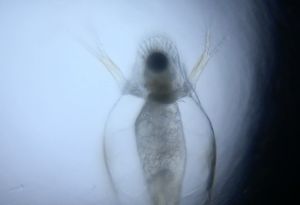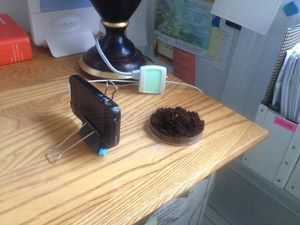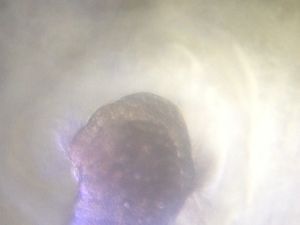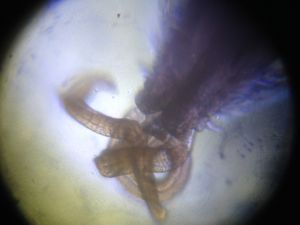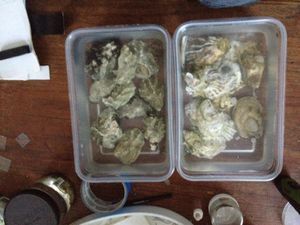Plankton at Gantry State Park
 Apr 27, 2016 • 1:32 PM UTC
Apr 27, 2016 • 1:32 PM UTC Unknown Location
Unknown Location 140x Magnification
140x Magnification Microorganisms
Microorganisms
Matthew Rossi
I'm a novelist, essayist, and a writing consultant. I work in the writing centers at Columbia and Baruch University and explore research into the overlap of maker cultures and writing. My work with the Foldscope tends to focus on finding wild creatures in urban spaces and looking at how human works are shaped by the movements of the biosphere.
40posts
105comments
4locations
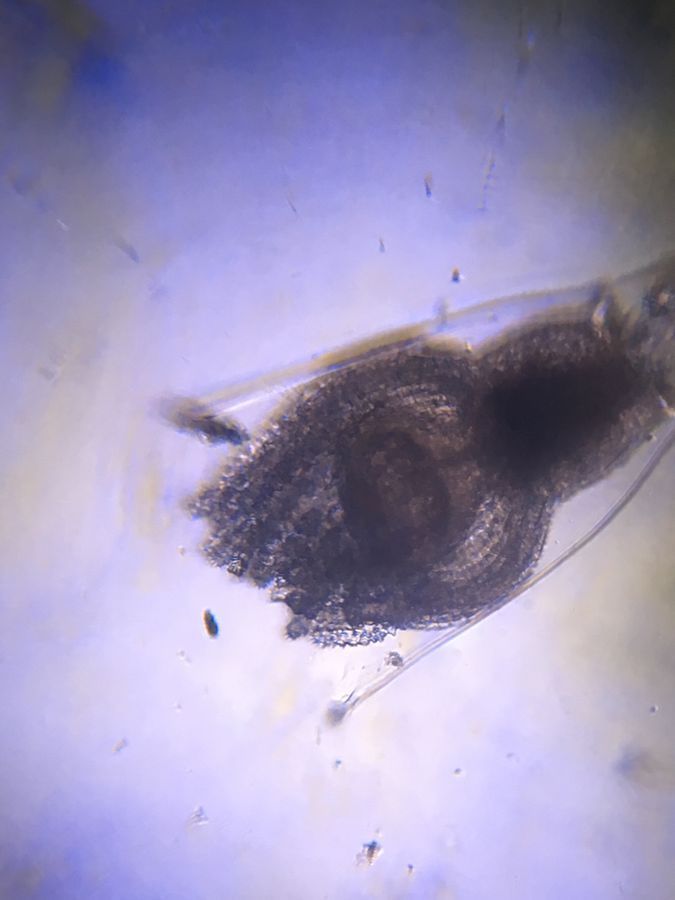
After a long cold snap at the end of the winter, and a pretty rainy spring, this week has finally brought in some sunny and warm days. I happen to be on spring break this week from one of the institutions I call home, so I took the time off to go fishing. It’s not commonly known, there’s a pretty sizable community of people who fish in NYC and a number of piers where it’s not only legal, but encouraged. One excellent pier is in Gantry State Park in Queens.
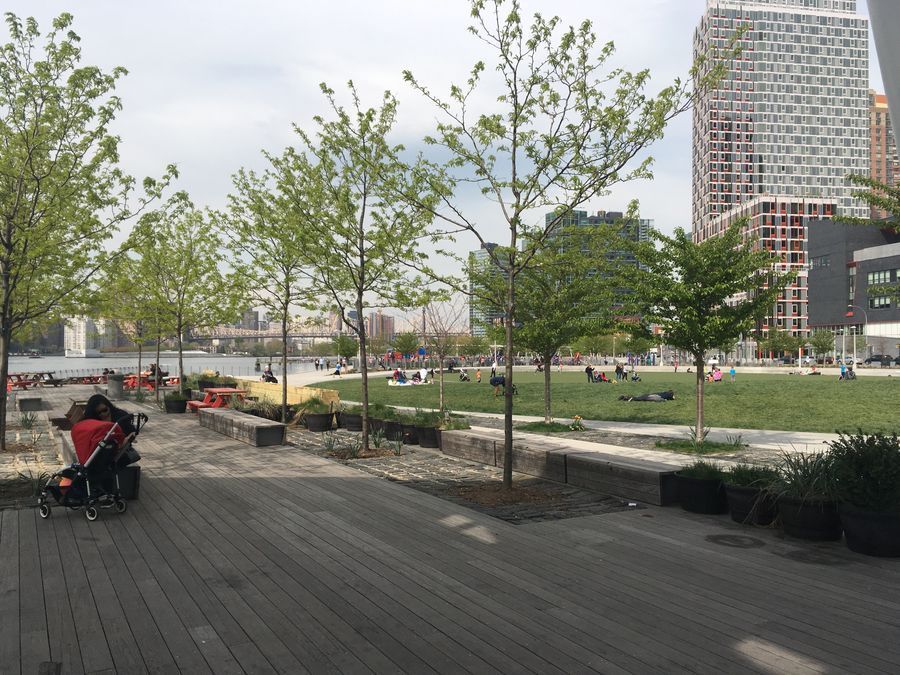
The park was built on the site of a dockyard, and actually still features the old gantry cranes that used to be used there. More importantly for my purposes, it also features a pier that juts out fifty feet into the water, perfect for fishing off of. When I arrived a young guy was already there with his fishing lines cast off. He’d caught a perch. I congratulated him and found a spot to cast off my own line. Of course, I was looking for smaller fare.
A note on my equipment and my methods. Since I was looking for plankton, I needed a plankton net. There’s a pretty good tutorial on how to make a plankton net here. I followed it pretty much to the letter, with one or two exceptions. The first being that I turned the stocking inside out, which stretched the fabric a bit and made the conical shape stand out. The second being that rather than making my own wire ring, I upcycled a part from an outdoor lamp my father didn’t want. For the bottle, I chopped the top off of a restaurant style squeeze bottle. The end result looks like this:
A note on my equipment and my methods. Since I was looking for plankton, I needed a plankton net. There’s a pretty good tutorial on how to make a plankton net here. I followed it pretty much to the letter, with one or two exceptions. The first being that I turned the stocking inside out, which stretched the fabric a bit and made the conical shape stand out. The second being that rather than making my own wire ring, I upcycled a part from an outdoor lamp my father didn’t want. For the bottle, I chopped the top off of a restaurant style squeeze bottle. The end result looks like this:
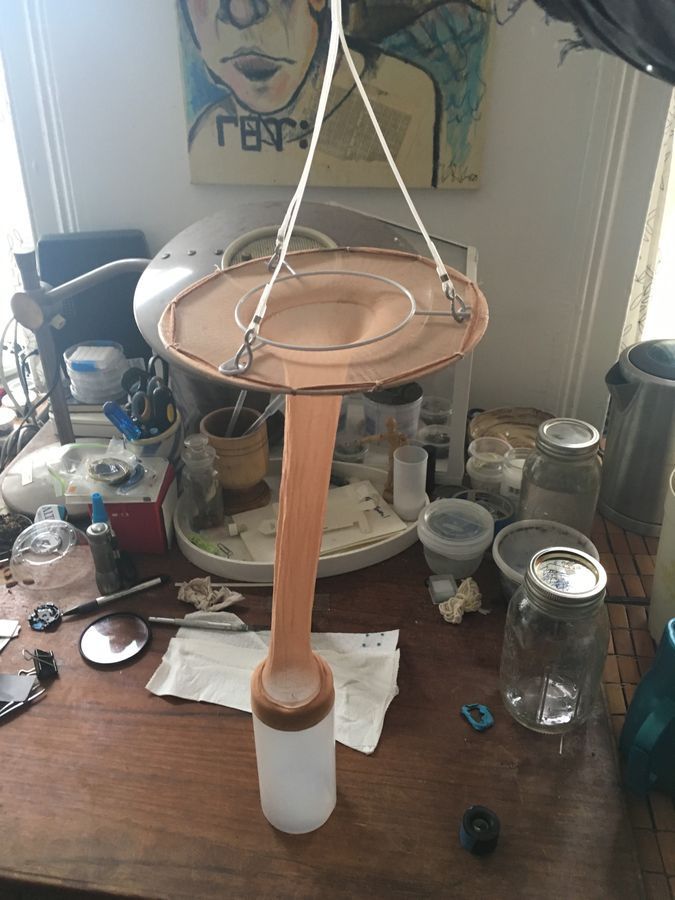
It’s not the fanciest piece of equipment in the world, but it does the trick marvelously. The hose is a bit delicate and can be prone to runs, but on the other hand, it costs very little money to replace.
The best time of day to gather plankton with a net like this (which is to say, from a stationary point) is at the turn of high tide. A plankton net needs to drag through the water in order to really do its work, because the idea is to drag a large volume of water, catch the plankton in that area, and discard the excess liquid. If you have a boat, you can accomplish this by dropping the net in and motoring/rowing some distance away, and then pulling the line in when you’re done. Since I don’t have a boat, I need to rely on the current, which, in an intertidal creek like the East River, is dictated by the tides.
In theory, you can do this at either tidal shift, but I choose high tide because it’s an old fishing trick. When the tide comes in, it drags with it many creatures from out in the ocean. They swim around for a while, and then the tide pulls them out. In addition, high tide just gives my net more depth to work with, so I don’t have to worry about dredging the bottom or snagging on a rock.
This was all something of an experiment for me, and I honestly couldn’t have been more thrilled with the results.
The best time of day to gather plankton with a net like this (which is to say, from a stationary point) is at the turn of high tide. A plankton net needs to drag through the water in order to really do its work, because the idea is to drag a large volume of water, catch the plankton in that area, and discard the excess liquid. If you have a boat, you can accomplish this by dropping the net in and motoring/rowing some distance away, and then pulling the line in when you’re done. Since I don’t have a boat, I need to rely on the current, which, in an intertidal creek like the East River, is dictated by the tides.
In theory, you can do this at either tidal shift, but I choose high tide because it’s an old fishing trick. When the tide comes in, it drags with it many creatures from out in the ocean. They swim around for a while, and then the tide pulls them out. In addition, high tide just gives my net more depth to work with, so I don’t have to worry about dredging the bottom or snagging on a rock.
This was all something of an experiment for me, and I honestly couldn’t have been more thrilled with the results.
This is the result of my first drag of about a half hour. Subsequent drags pulled in even more and more varied forms of creatures than this. Even here, though, you can see the water is dense with motion. Many of them are the familiar forms. Copepods are common in this sample, identifiable by their swift motion, their jerking. I managed to catch one that, to the naked eye, appeared to have a swollen tail. Under the microscope, it was revealed to be egg sacs.
If I am very lucky, I will be able to catch one again at a later stage of development and see the naupilii swimming around in the eggs.
The creatures I’ve found range toward more exotic things, though. Or at the very least, exotic to me. While looking over my sample at home, I noticed a globule bump in the water. At first, I assumed it was a barnacle cyprid, which I’ve noticed tend to get stuck in the surface tension.
The creatures I’ve found range toward more exotic things, though. Or at the very least, exotic to me. While looking over my sample at home, I noticed a globule bump in the water. At first, I assumed it was a barnacle cyprid, which I’ve noticed tend to get stuck in the surface tension.
But it was the wrong shape, its motion different than the cyprids I’ve seen. They tend to speed along the surface, driven by some motor I can’t figure out. This was swimming with a pair of legs, like a water beetle.
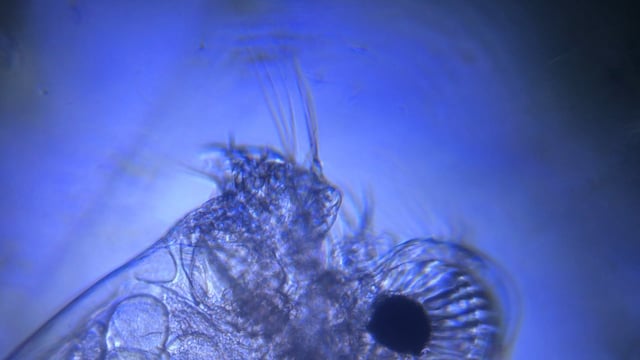

At first, I couldn’t figure it out, but have since narrowed it down. Normally, my process for this involves a lot of Google image searching and guesswork. For this, I also recruited this guide to plankton . As the file name indicates, it’s a cladoceran (a water flea), but not the normal sort you see when you image search for this. A little further research told me that marine cladoceran species are few, so narrowing that down further, I’ve concluded it’s from the family evadne.
Sometimes it isn’t the creature that seems strange and interesting, but the behaviors I’ve been able to observe with them. Polychaete worms have become a staple of my catches over the last few months, but the ones I catch are never free swimming. Most bore or build tubes (I had the pleasure of watching one do this in one of my tanks recently; they’re incredibly clever about hiding their locations), but free-swimming polychaetes normally are in a reproductive stage. Still, I was surprised to find this one.
Sometimes it isn’t the creature that seems strange and interesting, but the behaviors I’ve been able to observe with them. Polychaete worms have become a staple of my catches over the last few months, but the ones I catch are never free swimming. Most bore or build tubes (I had the pleasure of watching one do this in one of my tanks recently; they’re incredibly clever about hiding their locations), but free-swimming polychaetes normally are in a reproductive stage. Still, I was surprised to find this one.
The bundle in the middle is its eggs. I discovered this when I noticed the worm swimming from point to point with a little sphere tucked under its belly. It would swim a few centimeters, and then settle, curled around the eggs like a dragon protecting its horde. This sort of prosocial behavior comes as a surprise to me in a worm. I have a strong affection for the polychaetes (they’re sort of gross seeming, but really interestingly adapted to the environment; plus, as the fishermen pointed out, they make excellent bait), but it never occurred to me one would protect its eggs so vigorously.
My favorite catch was the comb jellies. For reasons unknown even to me, comb jellies fascinate me. Most are fairly macro sized and highly visible to the naked eye.
My favorite catch was the comb jellies. For reasons unknown even to me, comb jellies fascinate me. Most are fairly macro sized and highly visible to the naked eye.
Though they look like jellyfish, they’re actually a separate thing altogether, unrelated to jellyfish. Their motion comes about because of the movements of vast numbers of cilia moving along their body. You can see them when the animal is filmed in slow motion here.


What appears to be bioluminescence on them is actually a side effect of this cilia movement. The cilia catches the light, breaks it, and as a result, you get these iridescent pulses. The larger jellies are delicate creatures and much too large for a foldscope, but along with them, I also caught a few larvae, small enough to look at under the microscope.
It pulses, trying to move through the water, its little tendrils dangling from it. A good closeup shot of one reveals the rows and rows of stinging cells.
I was so ecstatic at catching the comb jellies, I showed them to the other fisher. He was less impressed with them than me, but that led to a conversation about the different creatures I was catching. As the day went on, he shared things he didn’t want with me.
Protip: tell the other people fishing around you what you’re up to, and they may actually help you out with some cool things. For instance, he reeled in an empty line at one point, but snagged on the line was a hairy mass that looked like grey seaweed. He offered it to me, and I gratefully took it, recognizing it as something much more interesting.
I was so ecstatic at catching the comb jellies, I showed them to the other fisher. He was less impressed with them than me, but that led to a conversation about the different creatures I was catching. As the day went on, he shared things he didn’t want with me.
Protip: tell the other people fishing around you what you’re up to, and they may actually help you out with some cool things. For instance, he reeled in an empty line at one point, but snagged on the line was a hairy mass that looked like grey seaweed. He offered it to me, and I gratefully took it, recognizing it as something much more interesting.
Under the microscope, it’s clear they’re not seaweed, but actually hydroids, relatives of jellyfish that have evolved a sessile and colonial existence. They drift through the water with their fronds open, feeding on creatures that come through. You can see the mouth of one in this video, moving around as it waits to eat, and the same stinging cells on its tentacles as you see on the comb jelly. Unlike the comb jelly, they’ve grown structures of calcium around them to keep them still. For reproduction, they make buds, like this one (I think) that hatch further polyps.
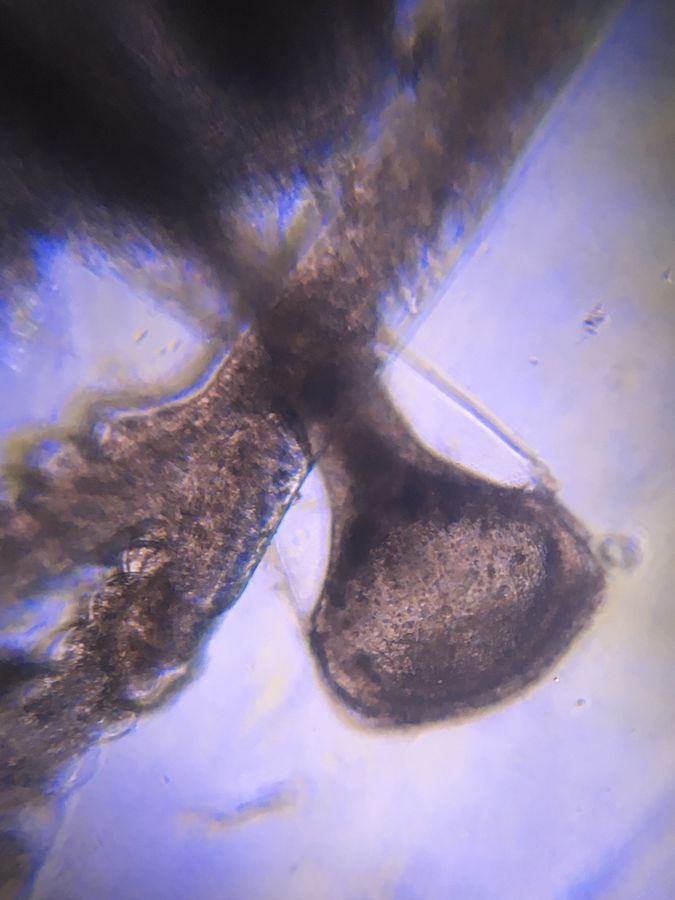
Taking advantage of the free ride and the great infrastructure, multiple colonies of vorticella also grow on the surface of this structure created by the hydroids.
(UPDATE: In addition to the vorticella, a tiny skeleton shrimp also was taking advantage of the structure of this colony!)
I’m really just getting started with the two jars of seawater I brought home from this last trip. This is to say nothing of the other cnidarians I found, or the free swimming prawn larva or the crab zoea and the marvelous colors the foldscope exposes on each of these.
This sample alone will keep me busy for a week before I have to send them back. But there’s more in this tank to be seen and over the summer, I plan to sample more creatures from different points around the city. Maybe this will provide a picture for me of what the map of the city looks like from watery space around it.
Sign in to commentNobody has commented yet... Share your thoughts with the author and start the discussion!
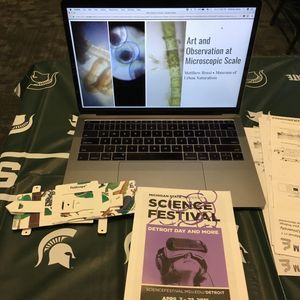
 0 Applause
0 Applause 0 Comments
0 Comments




